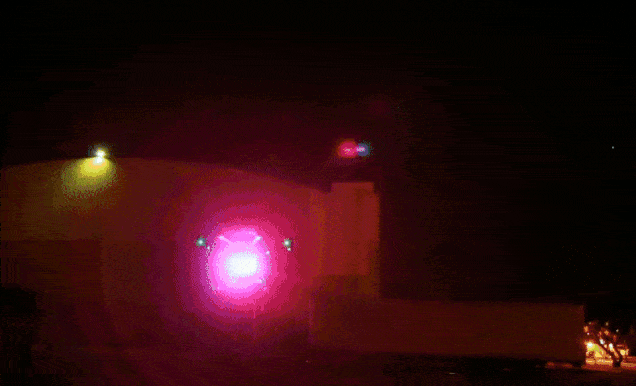California-based drone start-up Aptonomy has developed a self-flying security drone that it hopes will prove to be the guards of tomorrow. The octocopter comes equipped with cameras, a loudspeaker and blazing lights to deter unwanted visitors.

If I’ve learned anything from watching TV is that guards are always terrible at doing their jobs. From the medieval watchman catching some shut-eye on patrol to the modern guard passing the time with game-shows, they’re always laughably easy to pass by. Maybe people just aren’t cut out to be guards.
Drone start-up Aptonomy has designed a ‘flying security guard’ that will not succumb to boredom or tiredness. The team modified a DJI Spreading Wings S100+ drone by adding computer systems and cameras to allow it to navigate its environment, avoid obstacles, and identify threats. In case it runs into anything suspicious within its designated perimeter, the team equipped it with warning, flashing red and blue lights and a powerful spotlight to shine on the target. A security guard working in the control center would receive an alert from the drone and take direct control over it — the platform also carries loudspeakers for the guard to speak through it.
“Drones, being machines, are perfect for routine security patrols. [They] can multiply the reach and speed of your existing solutions,” Aptonomy’s website reads.
Each eight-propeller craft is a bit over one meter across and comes equipped with conventional and night vision cameras to allow it to patrol around the clock. The addition of one thermal camera is planned in the future, to allow the drone to spot people farther away.
Currently, each unit needs about 15 to 20 minutes of dock-time to fully charge its batteries.
“The drone automatically returns to its dock to recharge its battery, as needed. For maximum security, you can deploy a team of drones — once an active drone’s battery gets low, another drone seamlessly takes its place.”
The perimeter to be patrolled can be set through a smartphone app, and the footage is fed to a screen in the building to be patrolled.
The main problem to getting the drones off the ground and into the marketplace right now is that US airspace rules forbid unmanned aircraft from flying at night or to operate autonomously without direct supervision by a controller. However, the firm says its drones will be available for lease sometime next year.
There’s only one thing the company needs to prepare their drones for by that time: highly-trained killer eagles.






